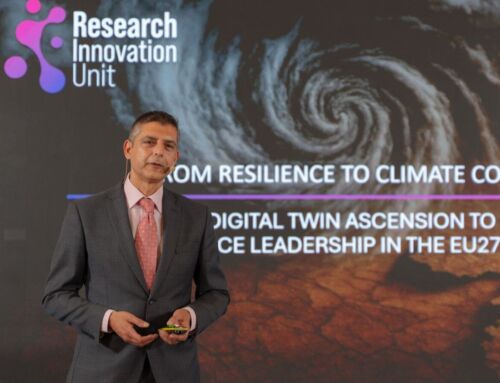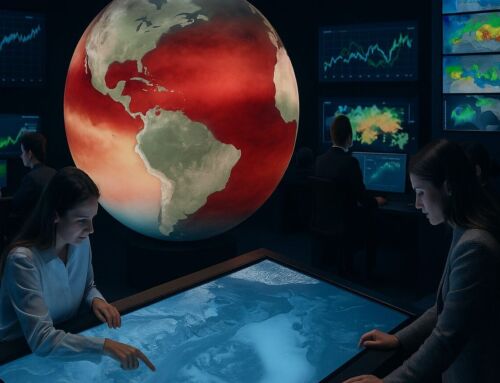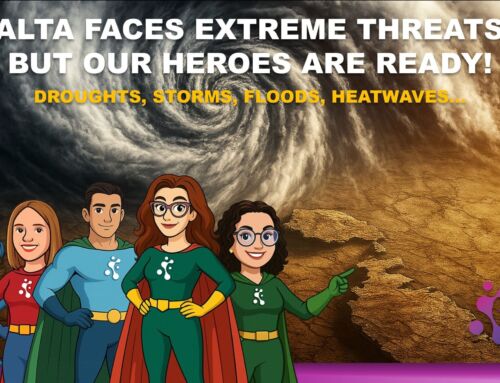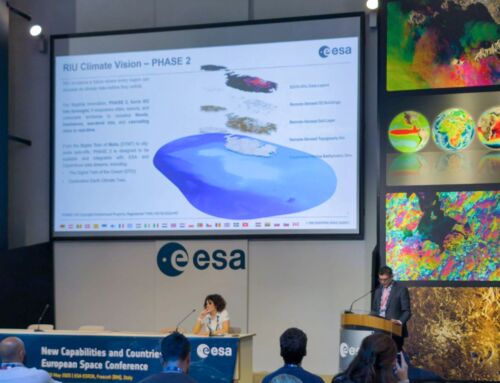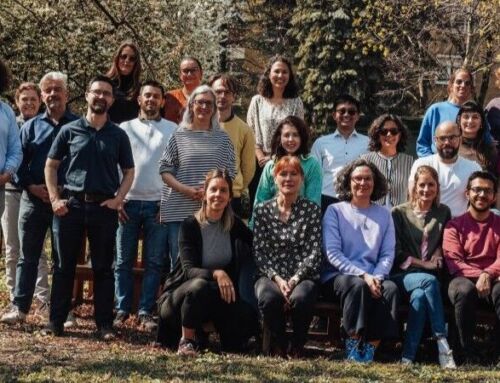A Quantum Leap for Climate Resilience
On the 24th of December 2024, the Research Innovation Unit (RIU) launched the Digital Twin of Malta (DTMT-01) — a groundbreaking achievement that positions Malta at the forefront of digital innovation for climate action. DTMT-01 marks the country’s first nationwide digital twin for climate resilience, developed entirely in-house by RIU to address Malta’s urgent environmental challenges.
This high-resolution, three-dimensional simulation platform integrates multi-layered land, marine, and urban datasets, enabling real-time and scenario-based analysis of climate risks. From sea-level rise and storm surge to heatwaves and urban flooding, DTMT-01 allows scientists, planners, and decision-makers to simulate impacts, test adaptation strategies, and inform evidence-based policy.
What is DTMT-01?
DTMT-01 is not just a model — it is a living, breathing mirror of the Maltese Islands. It ingests data from satellite observations (Sentinel-2, Sentinel-3), national digital elevation models, building footprints, climate projections, and urban land use. The result is a virtual environment that mirrors the physical, topographical, and environmental realities of the country with scientific precision.
Key Features:
- Nationwide 3D model integrating terrain, infrastructure, and marine contours
- Satellite-powered analysis of urban heat islands, sea-level rise, and climate severity
- Simulation of extreme weather events like Medicanes and coastal flooding
- Powered by the PHASE 2 (Predictive Hyper-Adaptive Simulation Engine) framework
- Designed to support climate policy, civil protection, and community awareness
From Vision to Implementation
DTMT-01 represents the culmination of over five years of scientific development, following the success of PHASE 1 (Malta’s Urban Heat Island Framework), which won the 2020 Malta Intellectual Property Award for Scientific Innovation. The need for a national digital twin arose from the limitations of siloed data and the growing intensity of climate-related hazards across the Maltese Islands.
RIU took the bold decision to build the Digital Twin from the ground up, without reliance on imported black-box systems. By leveraging open-source technologies, GPU-accelerated simulations, and ethical AI models, DTMT-01 is designed to be sovereign, scalable, and citizen-oriented.
A Platform for the People
Beyond serving policymakers and technical agencies, DTMT-01 is being expanded to engage the general public. Future versions will allow users to explore heat risk in their neighbourhoods, visualise flood-prone zones, and experiment with climate adaptation options through an intuitive web interface.
This vision reflects RIU’s commitment to climate democracy, empowering citizens, educators, and local councils with the tools to anticipate, adapt, and act.
What’s Next?
DTMT-01 is the foundation for a broader family of digital twins planned under the PHASE 2 programme, including:
- Sector-specific modules (e.g. energy, mobility, water security)
- AI-integrated weather forecasting and real-time alerting systems
Already, DTMT-01 has attracted attention from international partners including the European Space Agency (ESA), DG CLIMA, and Destination Earth. As the climate crisis accelerates, Malta’s digital twin is a lighthouse project, showing how small states can lead with vision, precision, and action.


